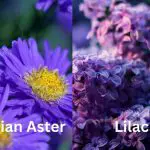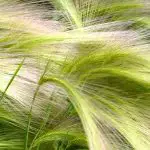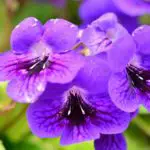Last Updated on May 8, 2023 by Derek
If you’ve ever taken a stroll through a wooded area or even along the side of the road, chances are you’ve seen a plant with bright yellow flowers and an elongated stem. This plant is known as the yellow rocket plant and it’s more than just a pretty sight.

Summary of key points about yellow rocket plant:
Yellow Rocket Plant, also known as Winter Cress, is a fascinating and unique species that belongs to the Brassicaceae family. It is identifiable by its yellow flowers and green leaves with serrated edges.Yellow Rocket Plant is widely distributed in North America, Europe, Asia, and Africa. It prefers growing in wetlands and open fields with moist soil.
Yellow Rocket Plant has culinary uses as it can be added to salads or used as a garnish for soups or stir-fries. The plant is rich in nutrients such as Vitamin C and potassium which promote good health.
The Lowdown on Yellow Rocket Plant
Yellow rocket plant, also known as “winter cress,” is a member of the Brassicaceae family, which includes other popular vegetables like broccoli and cauliflower. It’s an herbaceous biennial or perennial that can grow up to three feet tall.
| Plant Common Name | Scientific Name | US Growing Zone | Hardy/Perennial | Soil Type | Sunshine Requirements | Water Needs |
|---|---|---|---|---|---|---|
| Yellow Rocket Plant | Barbarea vulgaris | 3-9 | Perennial | Well-draining, moist soil | Full sun to partial shade | Regular watering, moderate drought tolerance |
A Fun Fact to Impress Your Friends
The name “winter cress” comes from its ability to grow in colder temperatures and become one of the first edible plants available in early spring. In fact, it was historically used as an important source of nutrition during harsh winters.
Nowadays, people are discovering that this unassuming plant has many other uses beyond its nutritional value. Let’s take a closer look at some of these uses in detail.
Appearance and Characteristics
A Winter Wonder
The Yellow rocket plant, or ‘winter cress’, is one of the earliest blooming plants of the year, often flowering as early as February! It grows up to 3 feet tall and has a slender stalk with alternating leaves that are deeply lobed. The leaves have a toothed margin and are green in color.
Flowers That Catch The Eye
One of the most striking features of this plant is its bright yellow flowers that bloom from March to May. The flowers have four petals and form in clusters at the top of the stem. They are about 1/4 inch wide and have a sweet smell, making them attractive to bees and other pollinators.
Identifying Yellow Rocket Plant In The Wild
Yellow rocket plant can be found growing wild along roadsides, fields, meadows, and other sunny locations throughout North America. Its bright yellow flowers make it easy to spot during its blooming period.
In addition, its deeply lobed leaves with toothed margins make it stand out from other similar-looking plants like wild mustard or garlic mustard. To identify it accurately, look for its distinct height (up to 3 feet), alternating leaves that occur along the stem in an irregular pattern with deep lobes that create a pointed shape at the end of each leaflet’s blade.
Habitat and Distribution
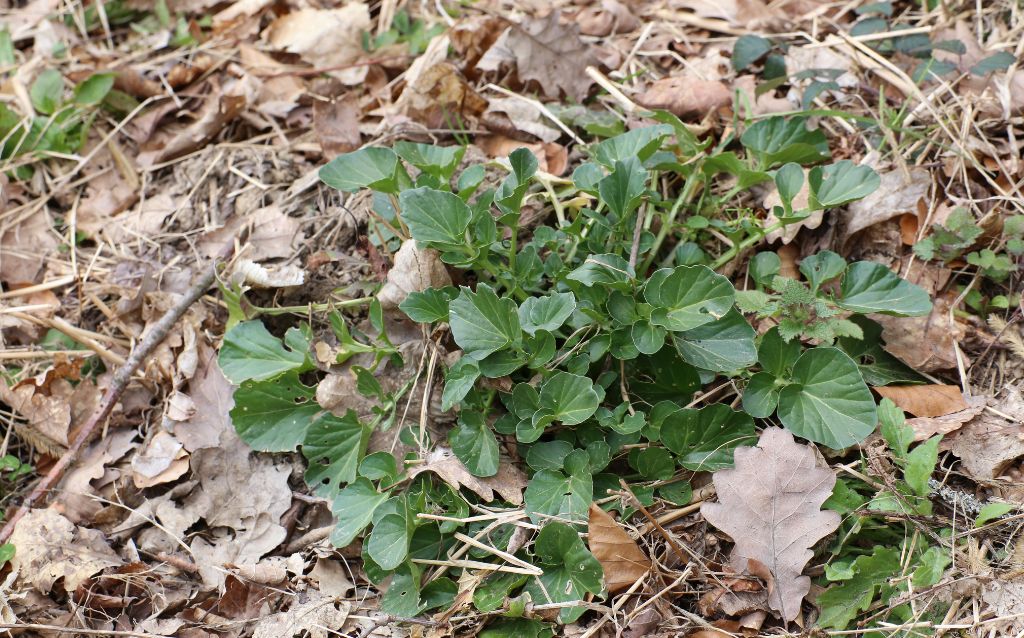
Where Can Yellow Rocket Plants be Found?
Yellow rocket plant, also known as “winter cress,” is a hardy plant that can be found in many regions of the world. It is native to Europe and Asia but has been introduced to North America, where it can be found in the wild in many different states and provinces.
This plant thrives in cool, damp environments, which is why it can often be found growing near streams or other bodies of water. It also grows well in disturbed habitats such as fields, meadows, and along roadsides.
Preferred Growing Conditions
Yellow rocket plants prefer soils that are fertile, moist, and well-drained. Since they grow best in cooler temperatures, they tend to do well in partial shade or full sun exposure. They are also quite tolerant of different soil types but seem to do best in soils that are neutral to slightly alkaline.
Yellow rocket plants can even grow on poor-quality soils due to their ability to fix nitrogen from the atmosphere. Overall, this versatile plant can thrive in a wide variety of conditions making it an excellent choice for gardeners looking for an easy-to-grow edible green.
Culinary Uses
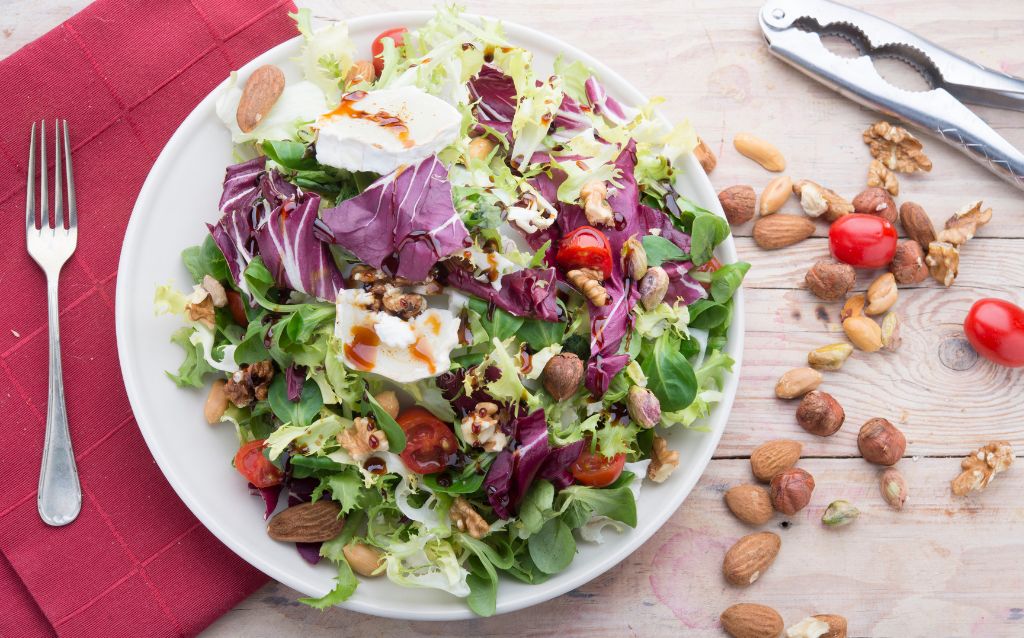
Unexpectedly Delicious Salad Ingredient
Yellow rocket is a versatile green that adds a peppery bite to salads and sandwiches. Its tender young leaves are the most flavorful, while the older ones can be a bit tough and bitter.
The plant’s edible flowers make for an attractive garnish or addition to salads, adding both visual appeal and flavor. Yellow rocket pairs well with milder greens like lettuce or spinach, but can also shine on its own as the star ingredient in a salad.
Rocket Salad with Parmesan and Lemon Dressing
Ingredients:
- 4 cups of rocket salad
- 1/4 cup grated parmesan cheese
- 1/4 cup extra-virgin olive oil
- 2 tablespoons lemon juice
- Salt and pepper to taste
Instructions:
- Rinse the rocket salad and spin it dry.
- Place the rocket salad in a large bowl.
- In a small bowl, whisk together the extra-virgin olive oil and lemon juice.
- Drizzle the dressing over the rocket salad and toss to combine.
- Sprinkle the grated parmesan cheese over the top of the salad.
- Add salt and pepper to taste.
- Serve and enjoy!
This recipe is a simple and delicious way to enjoy rocket salad. The lemon dressing adds a zesty flavor that pairs well with the slightly bitter taste of the rocket, and the parmesan cheese adds a rich and savory element to the dish.
A Flavorful Addition to Soups and Stir-Fries
Yellow rocket’s peppery flavor makes it a great addition to soups and stir-fries. Its hardiness means it will hold up well during cooking without losing its distinctive taste. It’s particularly popular in Asian cuisine, where it’s often used in spicy noodle dishes or stir-fried with other vegetables.
Nutritional Value and Health Benefits
| Nutrient | Amount per 100g |
|---|---|
| Protein | 2.6g |
| Fat | 0.7g |
| Carbohydrates | 3.9g |
| Fiber | 2.1g |
| Vitamin C | 70mg |
| Calcium | 440mg |
| Iron | 3.7mg |
| Potassium | 400mg |
Packed with Vitamins and Minerals
Yellow rocket is surprisingly nutritious, packed with vitamins A, C, E, calcium, iron, magnesium, and potassium. These vitamins and minerals promote healthy cell growth; help maintain strong bones and teeth; support the immune system; keep skin healthy; regulate blood pressure; assist muscle function; maintain nerve health.
A Natural Anti-Inflammatory
Studies have shown that yellow rocket possesses anti-inflammatory properties due to its high levels of antioxidants. Eating yellow rocket can help reduce inflammation throughout the body – one of the underlying causes of many chronic diseases such as diabetes or cancer.
The Perfect Diet Food

Yellow rocket is low in calories but high in fiber which means they’re perfect for anyone trying to lose weight or maintain their ideal weight by controlling portions effectively while keeping you feeling full longer thanks to its fiber content.
Medicinal Properties
Historical use of yellow rocket plant for medicinal purposes
Yellow rocket plant has a rich history of being used for medicinal purposes. Native American tribes used the plant to treat ailments such as toothaches, coughs, and rheumatism. In Europe, it was commonly used to treat digestive issues and skin conditions.
Some even believed that yellow rocket could help ward off evil spirits! While these uses may seem unconventional by today’s standards, they demonstrate the widespread belief in the healing properties of this unique species.
| Health Benefit | Description |
|---|---|
| Rich in Vitamin C | Yellow Rocket plants are a good source of vitamin C, which is essential for maintaining a healthy immune system and preventing scurvy. |
| Antioxidant Properties | The plant contains high levels of antioxidants, which help to prevent cell damage caused by free radicals and reduce the risk of chronic diseases such as cancer and heart disease. |
| Anti-inflammatory | Yellow Rocket plants have anti-inflammatory properties, which can help to reduce inflammation and swelling associated with conditions such as arthritis and asthma. |
| Detoxifying Effects | The plant has diuretic properties, which can help to flush out toxins and excess fluids from the body, promoting overall health and wellbeing. |
Modern research on its potential health benefits
In recent years, modern research has confirmed some of the traditional uses of yellow rocket plant. Studies have shown that it contains compounds with anti-inflammatory properties, making it a potential treatment for conditions such as arthritis and asthma.
Additionally, yellow rocket has been found to have antimicrobial effects, which could make it an effective natural remedy for infections. However, more research is needed to fully understand the potential health benefits of this fascinating plant.
Yellow Rocket Plant: A Versatile Medicinal Herb Yellow rocket plant may not be a household name in the world of medicinal herbs yet but with its long history and promising research results on its potential health benefits – from treating rheumatism to fighting infections – it is definitely worth keeping an eye on in the future!
Folklore and Symbolism
Cultural significance of yellow rocket plant in different societies
Yellow rocket plant has been used for centuries by various cultures around the world, unlike Canola, another yellow plant, that was cultivated specially for human consumption. In ancient Greece, it was believed to have healing properties and was used to treat a variety of ailments.
Native American tribes also saw the plant as having medicinal value, using it to treat coughs and colds. But beyond its medicinal uses, yellow rocket plant has also played a role in cultural traditions.
In some European societies, the plant was considered a symbol of spring and rebirth. It was often included in May Day celebrations and other ceremonies that marked the changing of seasons.
Superstitions or beliefs associated with the plant
In some cultures, yellow rocket plant has taken on a more mystical significance. There are legends that say if you pick the flowers while walking backwards and reciting an incantation, you will be able to see fairies or spirits.
Others believe that carrying yellow rocket with you will bring good luck and ward off evil spirits. Some even use the plant as a charm or amulet to protect against illness or bad fortune.
Regardless of its specific meaning or use, yellow rocket plant holds an important place in many cultural traditions around the world. Its enduring popularity is a testament to its beauty and versatility as both a natural remedy and symbol of hope and renewal.
Conservation Status
Yellow rocket plant is not currently listed as endangered or threatened by any governmental or conservation organizations. However, it is still important to consider its conservation status, as many plant species are at risk of disappearing due to changing environmental conditions and human encroachment.
Threats to the survival of yellow rocket plant
One of the biggest threats to yellow rocket plant is habitat destruction. As human populations continue to expand and urbanize, many natural habitats are being destroyed or fragmented. This can have a significant impact on the plants that depend on those habitats for their survival.
Another threat comes from invasive species that can outcompete yellow rocket for resources such as sunlight, water, and nutrients. Invasive species can also introduce new diseases and pests that yellow rocket may not be able to withstand.
Efforts to protect and preserve this species
Conservationists are working hard to protect and preserve yellow rocket plant in its natural habitat. One strategy is through habitat restoration projects that aim to restore degraded areas back into viable habitats for the plant. Another strategy involves educating the public about the importance of preserving natural habitats for all species, including plants like yellow rocket.
This includes promoting environmentally-friendly practices such as reduced pesticide use and minimizing human disturbance in natural areas. Overall, it’s important for us all to recognize the value of preserving biodiversity in our environment and take active steps towards protecting these unique plants like Yellow Rocket from extinction.
Final thoughts on why this unique species is worth learning about
Yellow Rocket Plants are not just part of nature’s beauty; they have socio-cultural value too. They are mentioned in various mythologies and folklores around the world. In some cultures, they symbolize strength, hope, or fertility.
Besides their cultural significance, these plants are an essential part of our ecosystem as they help stabilize soil moisture levels and prevent soil erosion. Furthermore, some studies suggest that Yellow Rocket Plants could have medicinal properties that could prove useful in treating certain illnesses.
Learning more about Yellow Rocket Plants enriches our knowledge of the natural world while deepening our appreciation for biodiversity. It’s worth taking a closer look at this hardy little plant that has so much to offer!


